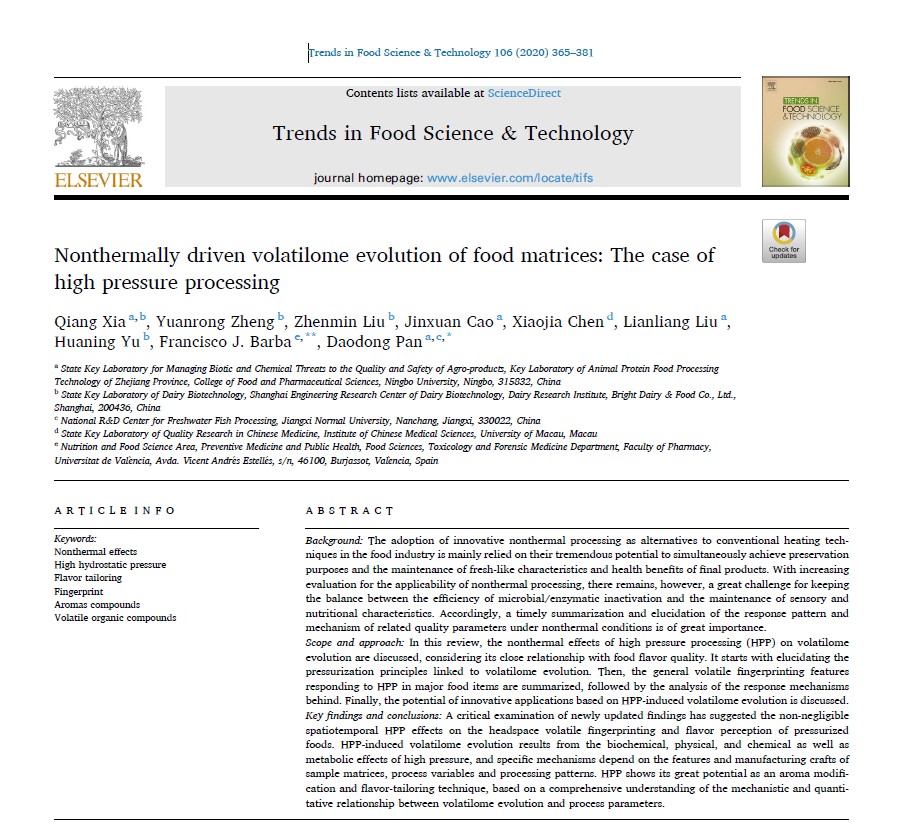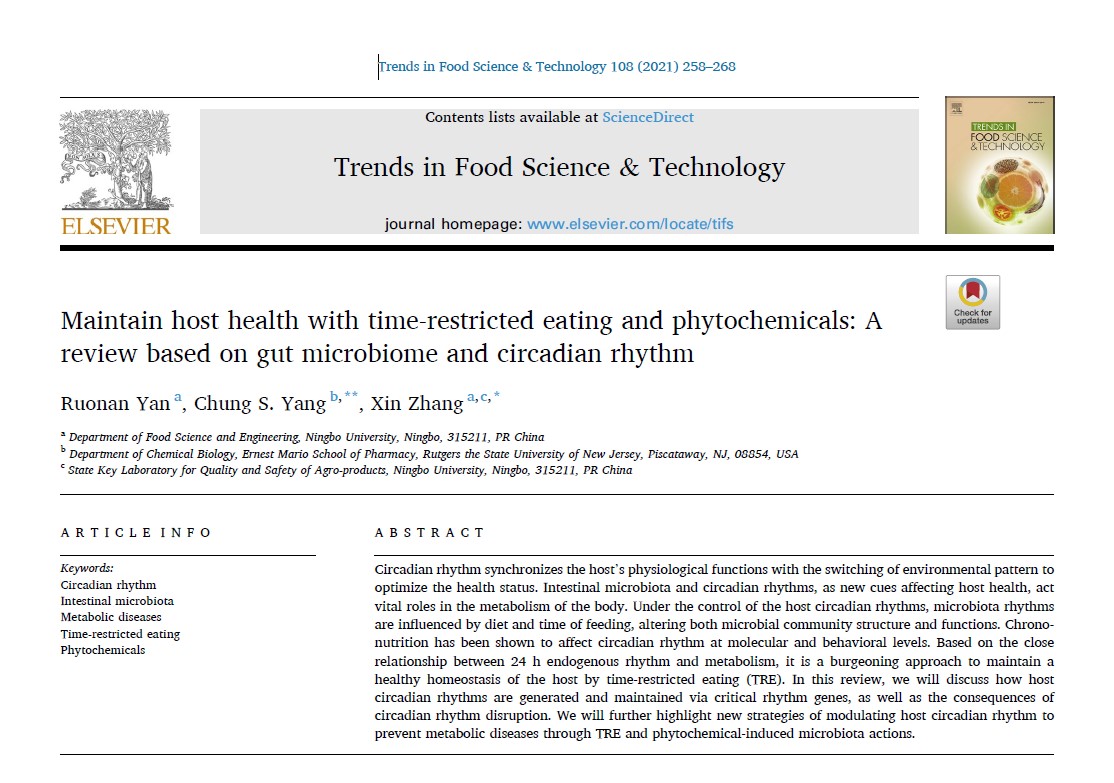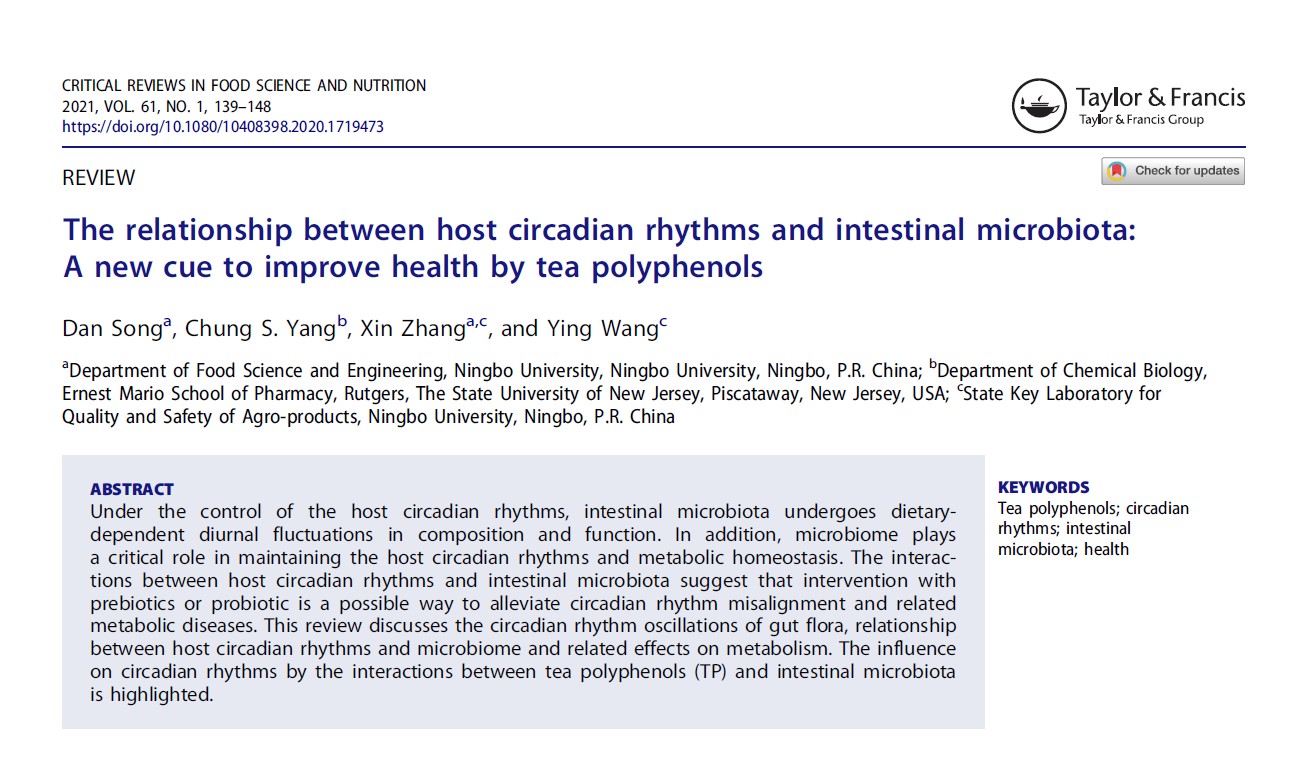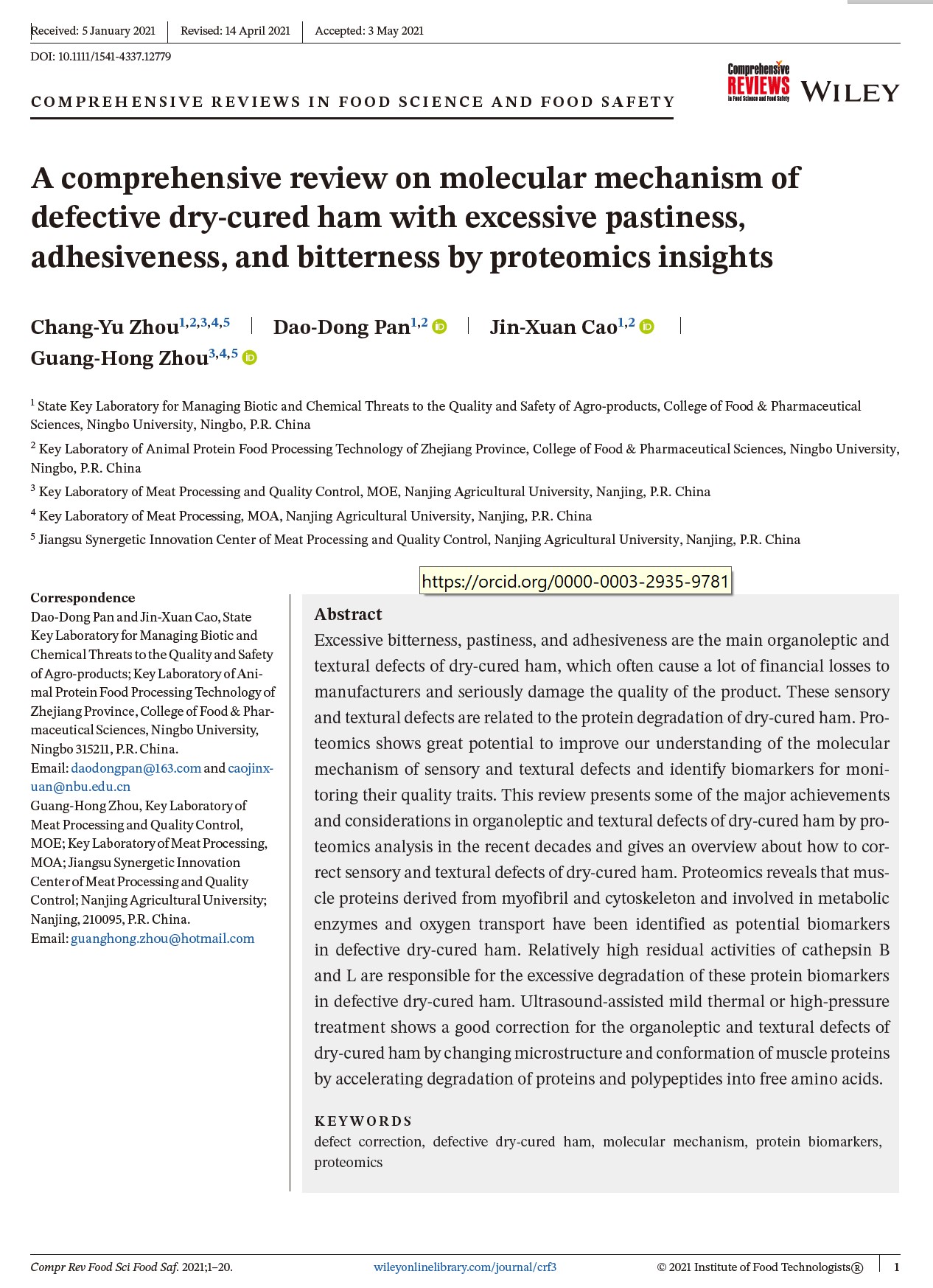近半年来,食品与药学学院青年教师在食品领域顶级期刊《Trends in Food Science and Technology》(1区,IF=11.077),《Critical Reviews in Food Science and Nutrition》(1区,IF=7.862),《Comprehensive Reviews in Food Science and Food Safety》(1区,IF=9.912)相继发表了4篇高水平论文。
2020年12月,夏强博士作为第一作者、潘道东教授为通讯作者在《Trends in Food Science and Technology》发表了题为“Nonthermally driven volatilome evolution of food matrices: The case of high pressure processing”的文章,总结归纳了典型食品基质高压处理过程中的挥发性风味组响应,全面解析了高压非热条件下挥发组响应规律与过程参数之间的定性定量关系及相关机理。
2021年1月,张鑫博士作为通讯作者、硕士研究生为第一作者在《Trends in Food Science and Technology》和《Critical Reviews in Food Science and Nutrition》发表了题为“Maintain host health under time-restricted eating and phytochemicals: A review based on gut microbiome and circadian rhythm.”,“The relationship between host circadian rhythms and intestinal microbiota: A new cue to improve health by tea polyphenols.”文章,探讨肠道菌群的昼夜节律振荡、昼夜节律的关键节律基因及其作用机制,提出了通过限制饮食和植物化学物质诱导肠道微生物结构发生变化,进而预防代谢疾病。
2021年6月,周昌瑜博士作为第一作者、潘道东和曹锦轩教授为通讯作者在《Comprehensive Reviews in Food Science and Food Safety》发表了题为“A comprehensive review on molecular mechanism of defective dry-cured ham with excessive pastiness, adhesiveness and bitterness by proteomics insights”的文章,系统地阐述了蛋白降解与干腌火腿感官和质地缺陷形成的关系,总结了蛋白质组学在分析干腌火腿感官和质地缺陷中的应用。
系列高水平论文的连续发表,反映了博彩导航
在人才队伍建设、科研能力、学生培养水平等方面的不断进步,不仅扩大了学科的影响力,也为我校农业科学进入ESI前1%做出了最主要贡献。
文章链接:
1、Nonthermally driven volatilome evolution of food matrices: The case of high pressure processing
//www.sciencedirect.com/science/article/pii/S092422442030649X

2、Maintain host health under time-restricted eating and phytochemicals: A review based on gut microbiome and circadian rhythm.
//www.sciencedirect.com/science/article/pii/S0924224421000091

3、The relationship between host circadian rhythms and intestinal microbiota: A new cue to improve health by tea polyphenols.
//www.tandfonline.com/doi/full/10.1080/10408398.2020.1719473

4、A comprehensive review on molecular mechanism of defective dry-cured ham with excessive pastiness, adhesiveness and bitterness by proteomics insights
//onlinelibrary.wiley.com/doi/epdf/10.1111/1541-4337.12779
